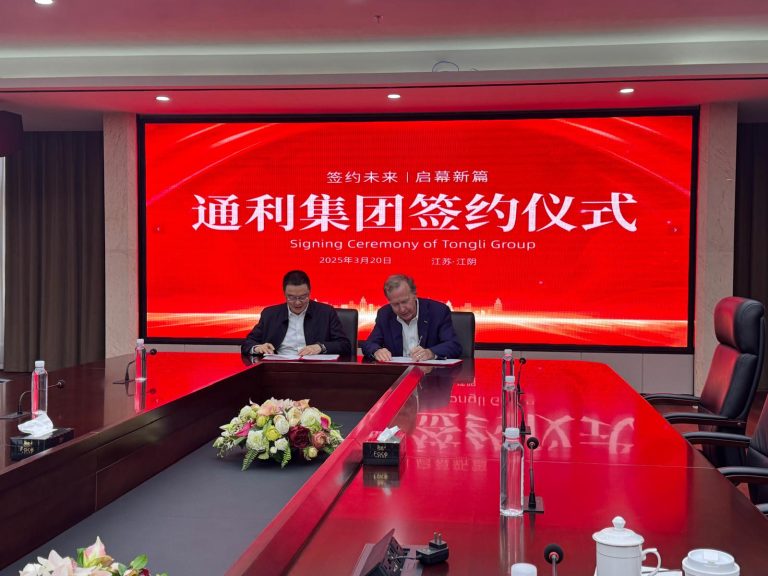One of China’s two major power grid operators, China Southern Power Grid (CSG) has predicted that by 2025, the annual power consumption of the Guangdong-Hong Kong-Macao Greater Bay Area will reach 700 billion kWh, with a maximum power load that will reach 120 million kw. The prediction was made in a report released last November.
Responsible for supplying power to the Greater Bay Area, the CSG is tasked with the goal of meeting the region’s increasing power demands as China increases its commitment to achieving carbon neutrality before 2060. How to balance the two has become a challenge.
Winds of change
Zhang Qiying, Executive President and Chief Technology Officer of Mingyang Smart Energy Group Co. Ltd., believes clean energy from wind farms will contribute to achieving both goals. “If we build six 10-gigawatt offshore wind farms by 2025, they would have the potential to supply more than 30 percent of the entire Greater Bay Area’s electricity load,” he said at the China-U.S. Carbon Neutral Technology Innovation Summit, which took place simultaneously in both countries on June 16.
“One offshore wind farm of this size can generate 40 billion kWh of electricity annually,” Zhang said. “That would save burning 12.88 million tons of standard coal equivalent. Carbon dioxide and sulfur dioxide emissions would therefore be reduced by 34.93 million tons and 83 tons, respectively, which is equivalent to planting 2 billion trees.”
The CSG is already rising to the challenge of delivering greener energy, vowing to build a clean, low-carbon, safe and highly efficient energy system that will replace traditional energy with renewable sources. As of December 30, 2020, the total volume of electricity generated by offshore wind farms of the company in Guangdong Province reached over 1 million kWh, up 259.34 percent from a year earlier, company sources said.
As a major supplier of wind generators for the CSG’s wind farms, Zhang’s company, benefits from its climate goals. Mingyang also constantly updates its technology to adapt to new market demand. Its first 5.5-megawatt floating offshore wind generators will be installed in Yangjiang, Guangdong, in August, and more advanced 10-megawatt wind turbines will be delivered to the project next year.
According to Zhang, these new products are able to withstand typhoons, which are common in the area. “Our floating offshore wind generators will be in mass production in the next two to three years,” Zhang said.
Technology for the future
Earlier this year, the Paris-based International Energy Agency (IEA) set the goal of building a global energy sector with net-zero emissions by 2050, and released a roadmap on May 18.
Speaking at the forum in June, Joseph Cascio, co-Director of the Environmental and Energy Management Institute at George Washington University, said in order to bring global energy-related carbon dioxide emissions to net zero by 2050, the world will need to increase its photovoltaic capacity by 20 times and its wind power capacity by 11 times, based on current levels. Electric vehicles will also need to account for 60 percent of auto sales by 2030, up from the current 5 percent. “The 2050 net-zero target will be a major challenge for humanity,” Cascio said. “Green technology companies and shipping and aviation sectors will need massive new investment in research and deployment of decarbonization technologies.”
With many countries announcing pledges to achieve carbon neutrality over the coming decades, the race to cut carbon dioxide emissions and toward net-zero emissions is well underway. Reaching these goals requires huge leaps in clean energy innovation and also opens doors for new-energy markets and green industries.
During the event, enterprises from both China and the U.S. shared details of their latest technologies for clean energy. Robert Allen Piconi, President of Energy Vault, a U.S. energy storage company, described their approach of delivering reliable and sustainable electricity with gravity and kinetic energy-based, long-duration energy storage solutions. Another participant, Langtry Meyer, founder and Chief Operating Officer of Texas LNG, also introduced their green technology in the liquid natural gas industry.
Wang Dongwei, Director of the Office of the State Power Investment Corp. (SPIC), one of China’s top five power generators, said the corporation is transforming its power production toward clean energy, using wind, photovoltaic and biomass sources. According to Wang, one of the SPIC’s current integrated smart energy projects, located in Xiaogang Village in Anhui Province, will supply the users with 100-percent clean energy and heating.
Shared responsibility
The IEA said in the roadmap that governments must work together in an effective and mutually beneficial manner to implement coherent measures that cross borders. At the forum, academics and industry representatives all conveyed their optimism regarding China-U.S. collaboration on climate change.
China will continue to increase its contribution to the fight against climate change, as it aims to peak carbon emissions before 2030 and to achieve carbon neutrality before 2060, using more potent policies and measures. With the U.S. now rejoining the Paris Agreement, both countries are now committed to bringing down carbon emissions.
“We should all be encouraged that Chinese and American leaders have agreed to work with each other and with other countries to address the climate crisis,” Neil Bush, Chairman of the George H.W. Bush Foundation for U.S.-China Relations, said at the summit.
The two countries said in a joint statement on April 18 that they agree that stronger pledges to fight climate change should be introduced before a new round of international talks at the end of the year. The statement came after a meeting between, Xie Zhenhua, China’s special envoy for climate change affairs, and his U.S. counterpart John Kerry in Shanghai on April 15 and 16.
“Today’s summit on technology innovation between the U.S. and China aims to help show the way forward to implement the carbon emission tasks of the two countries,” Eric Fang, President of the National Center for Sustainable Development, one of the forum’s organizers, told Beijing Review.
According to Meyer, China’s goal of carbon neutrality will require the support of new infrastructure and green technology. “As China is one of the world’s biggest importers of liquefied natural gas, suppliers in Texas are willing to share their technology with China,” he said.
“The U.S. has a long coastline,” Zhang said. “There is potential for Mingyang to have some cooperation on offshore wind power projects with U.S. companies and organizations.”
“What matters is that we acknowledge there is a crisis that threatens life on Earth for generations of humans and that we come together in a multinational approach to address the challenge,” Bush said.
Source: http://www.bjreview.com/World/202106/t20210628_800250817.html



